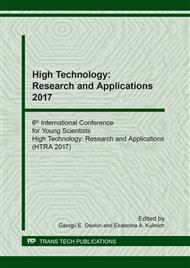p.181
p.187
p.195
p.201
p.207
p.213
p.220
p.227
p.235
Geochemical Features of Au-Te Epithermal Ores of the Samolazovskoye Deposit (Central Aldan Ore District, Yakutia)
Abstract:
The Samolazovskoye deposit (Central Aldan ore region, Russia) is confined to the porphyry syenite lopolith (J3-K1), localized between the granitic gneiss Archean basement and the series of the Vendian-Lower Cambrian carbonate cover rocks. Four hydrothermal-metasomatic parageneses have been identified within the deposit: skarn paragenesis, developed on the syenites and carbonate cover rocks contact; so called «gumbaite» paragenesis (kalifeldspar + fluorite + carbonate ± quartz), superimposed on the intrusive massif rocks; feldspatholitic paragenesis (quartz + feldspar), developed in the granitic gneisses of the crystalline basement; ore-bearing fluorite-roscoelite-carbonate-quartz paragenesis, superimposed on all of the above. The article compares ores evolved within gumbaitic syenites, basement feldspatholites and breccias, composed of all the above-mentioned rocks clasts. The geochemical study of given ores, resulted in two identified elements associations: gold-telluride (Au, Sb, As, V, Tl, Te, Hg, W) related to the fluorite-roscoelite-carbonate-quartz hydrothermal-metasomatic paragenesis and (uranium)-polymetallic (Bi, Cu, Pb, Zn, Mo, Se, Li, U), associated with the syenites gumbaitization (). There is only gold-telluride association within the basement ore bodies, while the ore bodies localized in the syenites intrusion hold both associations, along with the Au and Ag contents being an order of magnitude higher. Breccia ores are characterized by the maximum concentrations of the ore elements. Gold-telluride association of the Samoazovsky deposit ores is specific to epithermal Au-Te mineralization associated with alkaline (A-type) magmatism.
Info:
Periodical:
Pages:
207-212
Citation:
Online since:
April 2018
Price:
Сopyright:
© 2018 Trans Tech Publications Ltd. All Rights Reserved
Share:
Citation:


